Stargazer
Vulcans
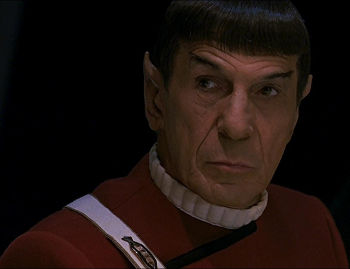
Spock, Vulcan male (ST-06)
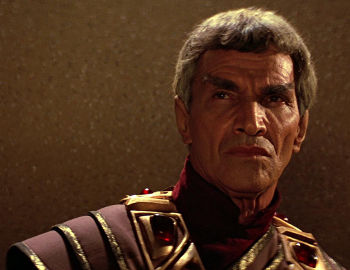
Sarek, Vulcan male (ST-03)

T’Pol, Vulcan female (ENT-22)
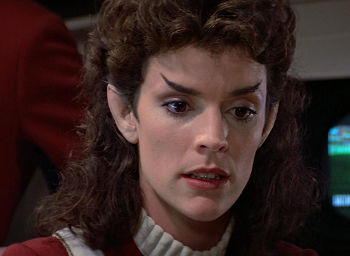
Saavik, Vulcan female (ST-03)
Species originating on Vulcan,[3] Vulcans were dedicated to a philosophy of emotional suppression in favor of total logic.[2]
References
- 1. “The Cage.” Star Trek, Episode 00. Television. 1965 (Unaired).
- 2. “Mudd’s Women.” Star Trek, Episode 03. Television. 13 October 1966.
- 3. “Amok Time.” Star Trek, Episode 34. Television. 15 September 1967.
- 4. “Journey to Babel.” Star Trek, Episode 44. Television. 17 November 1967.
- 5. “The Savage Curtain.” Star Trek, Episode 77. Television. 7 March 1969.
- 6. Star Trek II: The Wrath of Khan. Film. 4 June 1982.
- 7. “Broken Bow.” Star Trek: Enterprise, Episodes 01-02. Television. 26 September 2001.
Starfleet Command

Starfleet Command (ST-04)
The operating authority for Starfleet,[1] Starfleet Command was based out of San Francisco on Earth,[2] though command facilities were also located on major worlds and starbases throughout Federation space.[3] The Chief of Starfleet Operations oversaw a staff of admirals, each responsible for a specific region or division.[4]
References
- 1. “Court Martial.” Star Trek, Episode 15. Television. 2 February 1967.
- 2. Star Trek IV: The Voyage Home. Film. 26 November 1986.
- 3. The Star Trek Encyclopedia. Book. 1997 (rev. ed.). Pocket Books.
- 4. “Core Game Book.” Star Trek: The Next Generation Role Playing Game, Book 25000. Game. August 1998. Last Unicorn Games.
U.S.S. Gibraltar
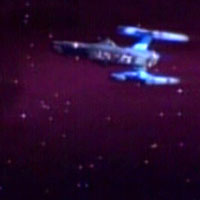
Constellation class (TNG-110)
The U.S.S. Gibraltar was a Constellation class Federation starship in service to Starfleet in the early 24th century. Captain Ernesta Rodriguez assumed command of the Gibraltar in 2319 and remained aboard until at least the mid-2330s. Officers serving under Rodriguez in 2333 included Commander Cherry, the first officer, and Chief Engineer Baskind.[2] Prior to 2333, Vigo was assigned to the Gibraltar before his posting aboard the U.S.S. Stargazer NCC-2893. During Vigo’s time aboard the Gibraltar, the ship was assigned on a patrol of the Romulan Neutral Zone.[1] In 2333, the Gibraltar was attacked and heavily damaged by an unknown vessel.[2]
Constellation class
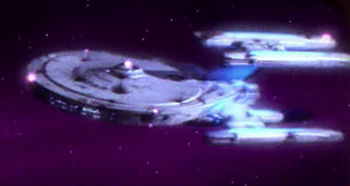
Constellation class (TNG-110)
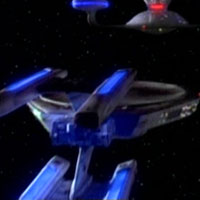
Constellation class (TNG-147)
The Constellation class was a starship type with four warp nacelles,[1] first commissioned in 2276.[11] The warp nacelles and several components of the saucer section shared many design similarities with the Constitution and Miranda class designs of the era.[1] Constellation-class ships were on the verge of being phased out in the mid-2360s,[6] but some were still in service in in 2370.[9] Several had already been decommissioned by 2365, including the U.S.S. Hathaway NCC-2593, which had been stripped of its offensive systems and rendered “warp inactive” by removing all antimatter from its warp reaction system.[6]
› Continue reading
U.S.S. Cochise

Constellation class (TNG-110)
The Constellation-class Starship Cochise was under the command of Captain Denton Greenbriar in 2333. The Cochise caught a pirate called the White Wolf, but let him go with a deal to help him. In 2333, the Cochise went to Starbase 32 for a meeting. Later, the Cochise went to the Beta Barritus Nebula to stop the U.S.S. Stargazer NCC-2893 from capturing the White Wolf; the Cochise was disabled.[1] En route to deliver Ambassador Surat to the planet Mizar II, the Cochise was attacked and disabled by an unknown vessel.[2]
2333 Crewmembers
- Commanding officer: Captain Denton Greenbriar, a Human male, highly decorated and experienced oficer
- First officer: Commander Alexander Dolgin, Human male
- Helmsman: Lieutenant Hohauser, Human male, served under Greenbriar since before Cochise was launched
- Navigation officer: Lieutenant Cangelosi, Human female
- Comm officer: Lieutenent Moy, Human male
- Tactical officer: Lieutenant Bolaris, Andorian male
- Science officer: O’Connor, Human female, a “pretty blonde” (rank and seniority uncertain)
- Engineer: Sasaki, Human male, “stocky, bald-headed” (rank and seniority uncertain)
- Security officer: Grolsch, Human male, arrived aboard in late 2333
References
- 1. “Gauntlet.” Star Trek: Stargazer. Novel. Pocket Books. May 2002.
- 2. “Enigma.” Star Trek: Stargazer. Novel. Pocket Books. August 2004.
Vulcan
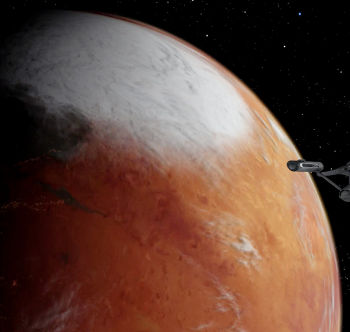
Vulcan (TOS-34)
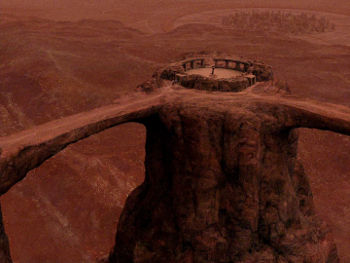
Vulcan surface (TOS-34)
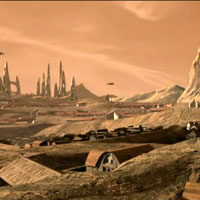
Vulcan surface (ENT-79)
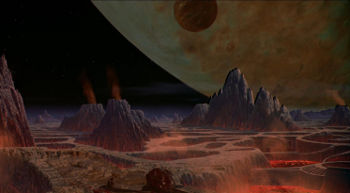
Vulcan Surface (ST-01)
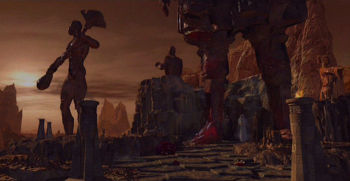
Vulcan Surface (ST-01)
Vulcan, a Class-M world,[2, 4] was the second planet in the 40 Eridani trinary system, orbiting 40 Eridani A.[4] Although Vulcan had no moon,[1] the planet shared an orbit with its sister world, T’Khut.[3]
› Continue reading
Sol System
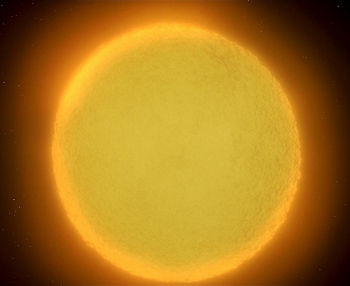
Sol (ST-04)
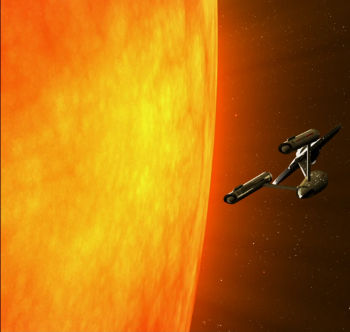
Sol (TOS-21)
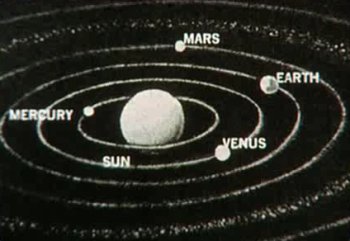
Sol System (TOS-00)
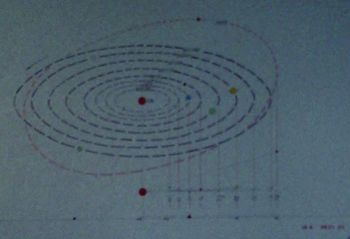
Sol System (TOS-37)
Star system located in Sector 001, in the Alpha Quadrant. The parent star, Sol, was Type-G and was orbited by eight planets (though Pluto frequently switched between being considered a planet and a planetoid),[2] including Earth, and was commonly known as the Sun. The Talosians viewed an image of the Sol System and many images of Earth’s history while accessing the U.S.S. Enterprise NCC-1701‘s computer in 2254.[1]
Planets
References
- 1. “The Cage.” Star Trek, Episode 0. Television. 1965 (Unaired).
- 2. “Before Dishonor.” Star Trek: The Next Generation. Novel (Unnumbered). November 2007.
Luna
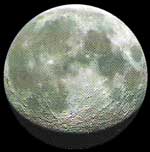
Luna (STSC)
Luna, commonly known simply as “the Moon,” was a Class-D world orbiting Earth.[4] By the late 24th century, more than 50 million people lived on the Moon.[3] The Talosians viewed several images about Earth’s Moon and programs to study and explore it while accessing the U.S.S. Enterprise NCC-1701‘s computer in 2254.[1] The Copernicus Ship Yards were located in orbit, with office facilities on the surface; the U.S.S. Hathaway NCC-2593 was built there.[2] Other points of interest on the Moon included Tranquility Base, where Apollo 11 landed in July 1969; as well as Lake Armstrong and New Berlin.[3] See also: Apollo program, Armstrong, Neil, Kennedy, John F., Lunar probe, Ranger probe.
References
Earth
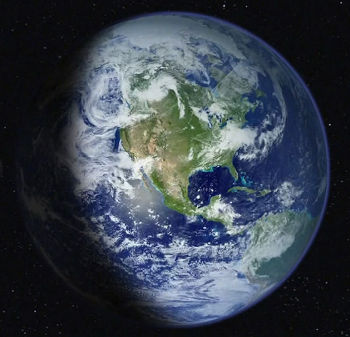
Earth (TOS-21)
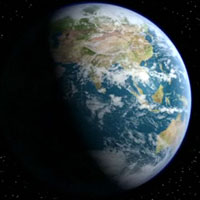
Earth (ENT-78)
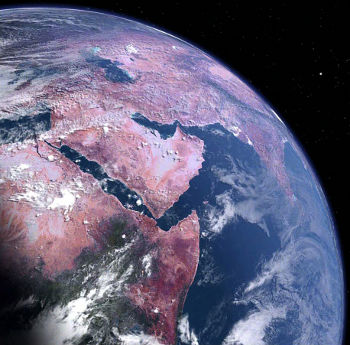
Earth (TOS-55)
Class-M. Earth is the third planet in the Sol System[1] in Sector 001[7] and homeworld of Humans. In 2254, the Talosians viewed an image of the Sol System and many images of Earth’s history while accessing the U.S.S. Enterprise NCC-1701‘s computer.[1] Earth became one of the founding members of the United Federation of Planets in 2161,[15] following the Romulan War,[6] and served as that body’s capital.[5] Starfleet Command and Starfleet Academy were based in San Francisco,[2, 3] while the offices of the Federation President[9] and the Federation Council chamber were located in Paris.[22] The planet hosted several advanced orbital habitats,[2] Starfleet spacedocks,[4] and satellite networks, including Federation communications networks.[12]
› Continue reading
Planet, Class-M

Earth (ENT-78)

Vulcan (TOS-34)
Terrestrial. Age ranged from 3-10 billion years. Diameter was 10,000 to 15,000 km. Typically located in the Ecosphere of a planetary system. Surface water was abundant; if water or ice covered more than 80% of the surface, the planet was considered Class O or Class P. Atmosphere was primarily primarily nitrogen, oxygen, and trace elements. Contained extensive vegitation and animal life.[8] Capable of supporting carbon-based, humanoid life.[1]
The designation apparently stemmed from the Vulcan word “Minshara,” which was used to designate planets capable of supporting life.[7] Class-M planets could vary widely in color, cloud cover, and overall appearance. Most Class-M planets were characterized by a relatively thin, tectonically active crust floating on a molten rock mantle, which in turn surrounded a liquid metal outer core and a solid inner core composed of metal crystals.
› Continue reading
Categories
- Animated Series (60)
- Articles (28)
- Books (447)
- Cast & Crew (79)
- Comics (22)
- DS9 (328)
- Early Voyages (125)
- Education (5)
- Enterprise (373)
- Excelsior (36)
- Food (19)
- Games (223)
- Klingon (70)
- Library (1,543)
- Logs (593)
- Lost Era (55)
- Medicine (18)
- Merrimac (1)
- Mirror (35)
- Miscellaneous (13)
- New Frontier (54)
- Next Generation (635)
- Original Series (681)
- Personnel (436)
- Places (369)
- Politics (12)
- Recreation (10)
- SCE (41)
- Science (1)
- Shatnerverse (9)
- Ships (455)
- Site Updates (98)
- Starfleet Academy (86)
- Stargazer (42)
- STO (61)
- Technology (45)
- Titan (59)
- To Boldly Go (1)
- TV/Film (214)
- Uncategorized (4)
- Vanguard (76)
- Voyager (236)
- Weapons (27)
- Xenology (54)